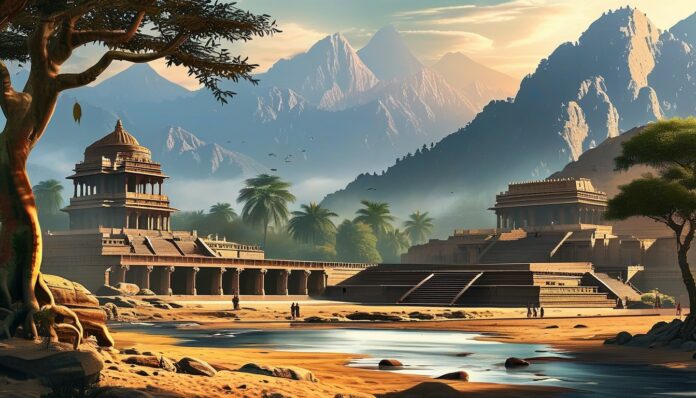Even in ancient times, a powerful culture emerged in Ancient India. The various independent states that existed here flourished, sometimes cooperating, sometimes competing, and even waging wars against each other.
However, after their unification into a single country, this culture persisted and has survived to the present day. Numerous scholars continue to study the history of Ancient India, and even today, they regularly uncover new facts shrouded in the mists of time.
Facts About Ancient India:
- Bronze Age: People in Ancient India learned to produce and work with bronze around 5,000 years ago.
- Private Property: The concept of private property emerged in Ancient India thousands of years ago, around the 2nd-3rd millennium BCE.
- Absence of Monuments: The ancient Indian civilization did not leave behind any monumental structures. The preserved artifacts, including sculptures and images, are relatively small in size.
- Rice Cultivation: It is believed that rice was first deliberately cultivated in Ancient India, approximately 9,000 years ago.
- Oldest City: Varanasi, located in the Ganges Delta, is considered the oldest city in India. Although the exact date of its founding is unknown, evidence suggests it is around 5,000 years old, making it one of the oldest cities in the world. However, some sources suggest a more modest age of about 3,000 years.
- Ancient Inhabitants: Ancestors of modern humans inhabited the lands of Ancient India about 2.6 million years ago. This is evidenced by stone axes of that age and several animal bones bearing marks from these axes.
- Persian Raids: For several centuries, Persian kings launched raids on the kingdoms of Ancient India, plundering them and imposing tribute.
- Origin of Chess: The precursor to the popular game of chess originated in ancient Indian culture.
- Ayurveda: The practice of Ayurveda began in Ancient India around 2,500 years ago and remains popular to this day.
- Scientific Advancements: Ancient Indian scholars developed knowledge in astronomy, geometry, and algebra. They were also aware of the value of the number “pi.”
- Sugar Production: Even in those ancient times, the locals knew how to extract sugar from sugarcane. To this day, sugarcane is harvested by hand in modern India.
- Glass Manufacturing: Archaeological findings indicate that people in Ancient India knew how to make glass.
- Sewer Systems: Ancient Indian cities had sewage systems for centralized waste drainage.
- Religious Artifacts: Almost all the sculptures from that time that have survived to the present day have a religious nature.
- Invention of Hookahs: Hookahs were invented in Ancient India.
- Diverse Religion: Ancient Indian culture gave birth to Hinduism, the most diverse religion in the world. No other culture has as many deities as Hinduism.
- Ancient Literature: The oldest literary works from Ancient India are nearly 4,000 years old.
- Cotton Cultivation: People in Ancient India knew how to cultivate cotton and spin it into yarn.
- Elephant Domestication: Elephants were first domesticated in Ancient India.
- Sanskrit: The ancient Indian language Sanskrit laid the foundation for many other world languages.
